QNAP TS-873A Storage Performance
The storage performance of these systems is very dependent on the disk configuration including drives used, cache SSDs, compression/ deduplication, and even RAM/ other applications running on the NAS. We used 8x 8TB Seagate IronWolf drives in the QuTS hero configuration.
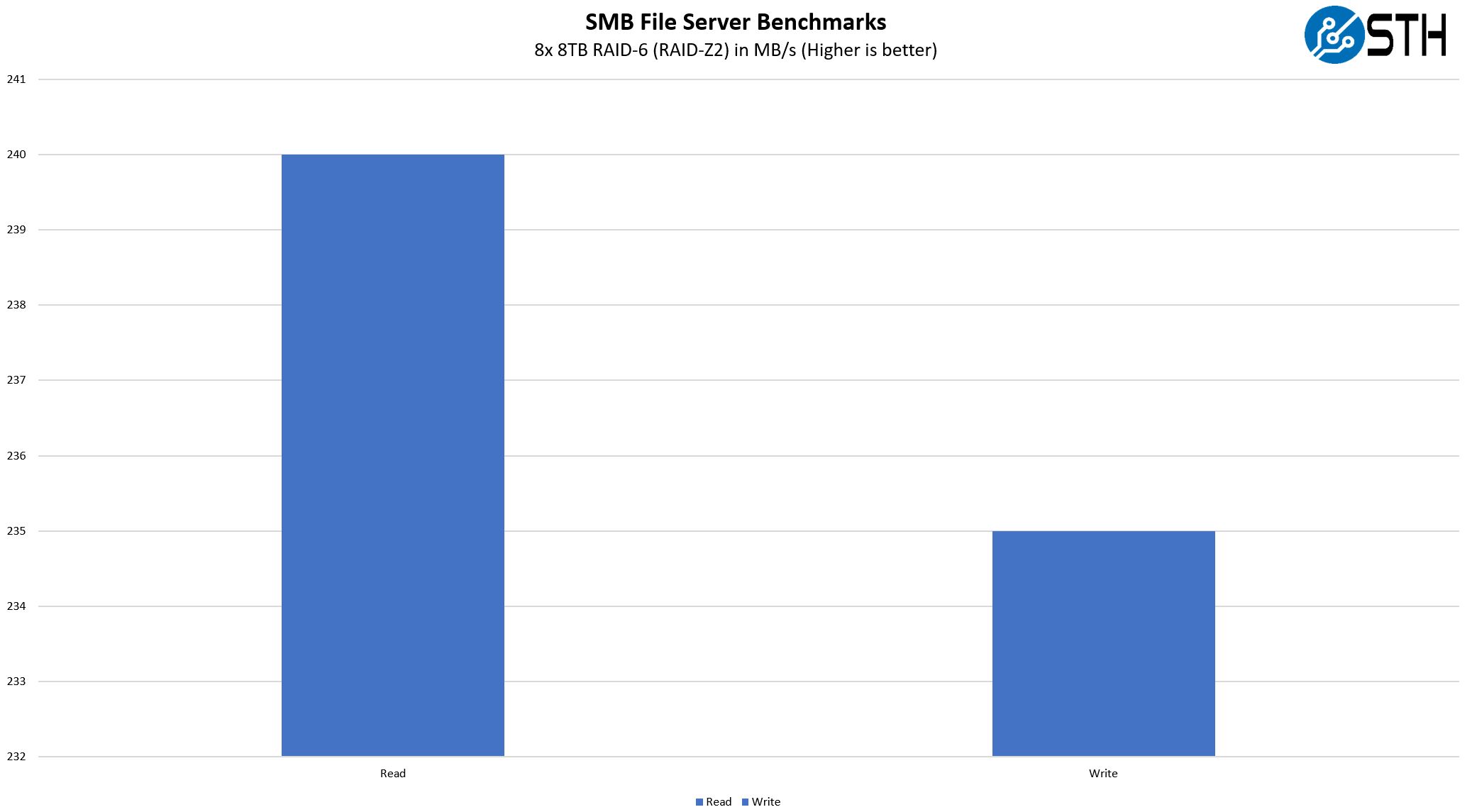
Here is another view looking at the file transfer speeds.

Overall performance was good and is on par with what we have seen with other ZFS solutions from QNAP using 2.5GbE.
Power Consumption and Noise
The power consumption is dominated by disks and add-in cards. We debated whether we should test this in our 208V data center lab or in our 120V embedded edge data center lab. In the end, we are using 120V edge lab at 17.7C and 70% RH. Our testing window shown here had a +/- 0.3C and +/- 2% RH variance.
- Idle empty: 26W
- Max observed: 58W
It seems as though the 250W power supply configuration is ample for this unit. We did get a bit of variance in testing, but the key here is that this is fairly low power. We also need to remember that these units can have expansion cards such as NICs, SSDs, GPUs, and more that would add to power used.
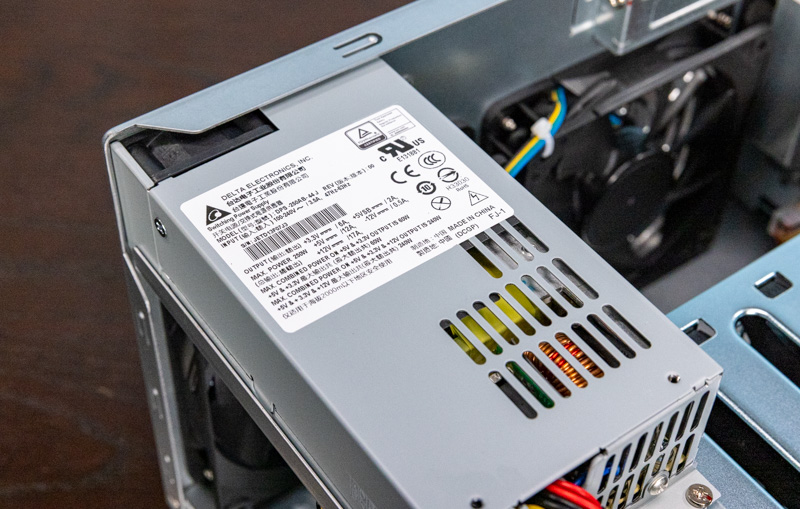
In terms of noise, we saw the following in a 23dba ambient environment as measured from 1m in front of the chassis:
- Idle: 25dba
- Moderate Disk Activity: 31dba
The disk activity is probably what would make one put this a few feet/ meters away rather than directly next to their chair. Still, this is not a unit that most will find needs to be located in a data equipment closet.
Next, we are going to discuss the market impact of this solution, along with our final words.
Final Words
Reviewing a QNAP system these days is much different than even a few years ago. It almost seems as though QNAP has NAS enthusiasts designing these products. Five or six years ago an 8-bay NAS from a NAS vendor was a relatively closed and proprietary system but generally had easy-to-use software and often with proprietary storage engines. The TS-873A still uses a proprietary motherboard and a few features like that but it has a lot of engineering behind those design decisions while offering a lot of flexibility in the configuration. Even the ability to switch to QuTS hero and get a ZFS-based solution feels like it was driven by market feedback.
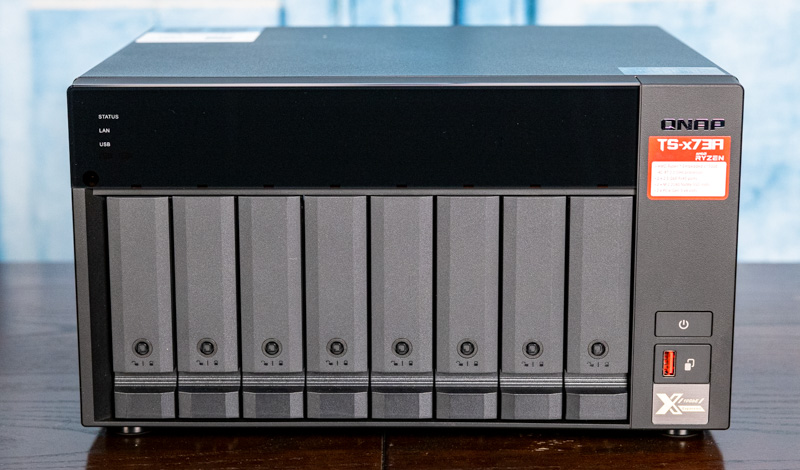
We like the inclusion of 2.5GbE over 1GbE. At some point having 2.5GbE is nice. We do wish there was onboard 10GbE, but one can add additional cards and that is really the point of this type of solution. Beyond that, QNAP also has some NIC + SSD hybrid cards making the two slots found in the system tantalizing for configuration options.
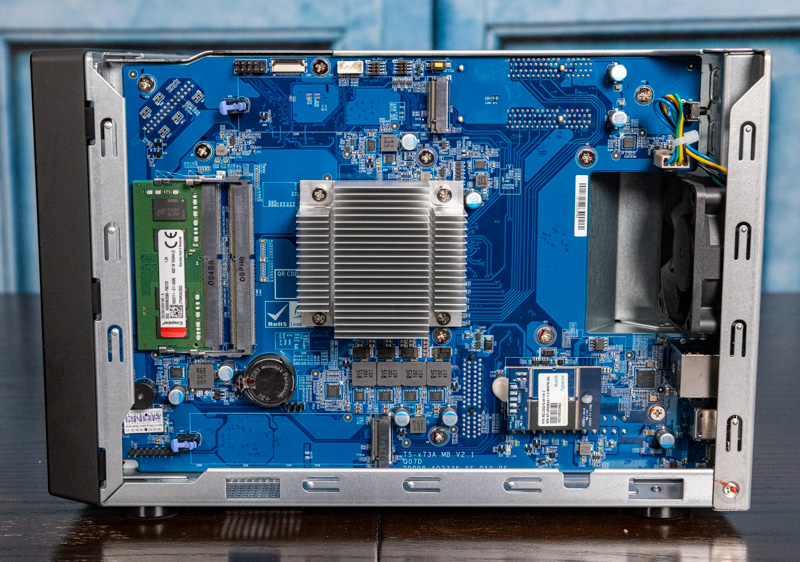
The other side of this solution goes beyond simple storage. These systems are now designed to do much more than just provide NAS functionality. One can run VMs, containers on the NAS and use these servers as local servers for a home or small business. There are both templates to make setting up common applications easy as well as allowing one to build their own solutions based on fairly standard technologies.
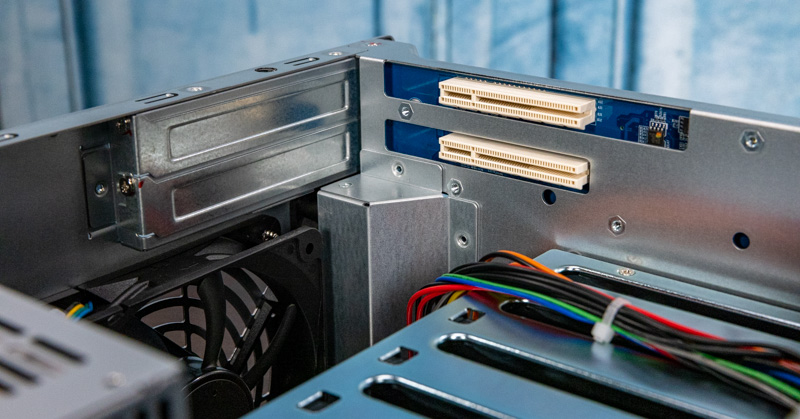
Pricing wise this unit is around $1049. There is certainly a premium being applied to the NAS that goes towards the engineering of the cooling solution, chassis, assembly, and also software. Some may balk at valuing those at a few hundred dollars while others will see a solution that one can order, and have up and running in a few minutes with a web browser as a great trade-off. Pricing feels right to us given what other vendors are offering at similar price points.
Overall, this is a great unit and a fun one for those who want an AMD-based storage solution.



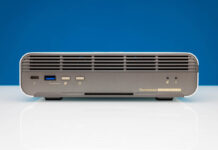
I love TrueNAS, and the TrueNAS Mini’s have 10g on some of them. You can add a 10g card and still be close to the 4 bay mini x+ and xl+ pricing and have ZFS with QNAP.
I really wish QNAP did ceph or gluster so you could scale these out
QNAP always seemed to me a rather grasping and feature splitting company. Overpriced for what you get. This thing is in essence a PC in a special case… the SOC has dual 10GbE, so QNAP equips it with a pair of third party 2.5 GbE. Really gotta shake my head at that. I presume QNAP thinks it can make more money selling you a PCIe 10GbE AIC.
Honestly if one is competent enough to configure one of these things then one is probably competent enough to repurpose an old PC into a Linux or Windows server and save a substantial amount of money.
So few companies use the AMD 10g in the Zen chips that there’s gotta be something wrong beyond the lack of SR-IOV that STH has talked about before.
This is probably the box I would get for my home office (can i get a yay for work-from-home getting extended?)
I do not find the windows inside of windows inside of Windows user interface modern. I could l overlook that annoyance, but periodically the QNAP software here forgets what routes go to which Ethernet connections and I have to open the interface on the net that works, delete and then recreate the nonfunctional routes.
Since the present review is for what is essentially a PC in a nice box without a video card, it would be good to know how easy (or possible) it is to install Linux to create an open-source NAS that leads to auditable security and fixable bugs.
What pratt thought it a good idea to put the power button next to an area where you push things in and out?
Major design fail
Hoohoo: would you be saving money though? The idle electricity use of this box is only 25 watts, that’s pretty good. Repurposing an old PC means you need a place to put the giant box, and you’re going to use much more electricity. The thing I love about this box is that it fits nicely in my TV cabinet where my cable is coming into the house, where my cable modem, router, and everything else are located, so it sits discretely in my living room, don’t think I could accomplish that by repurposing my old gaming PC.